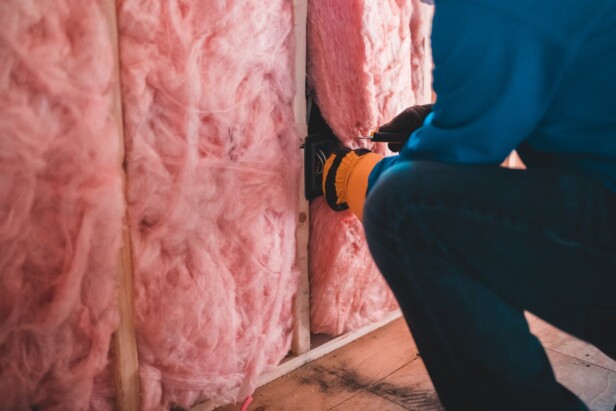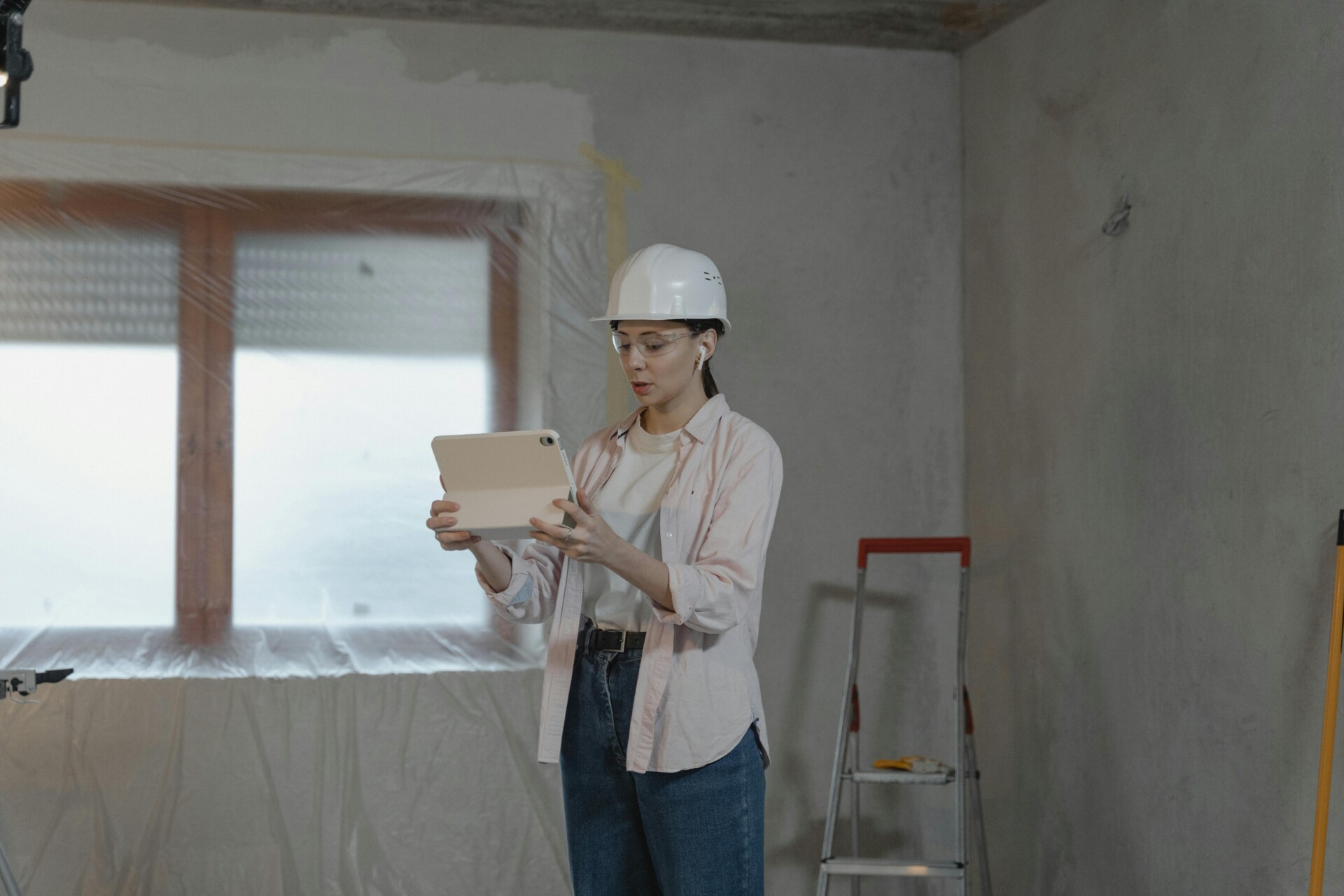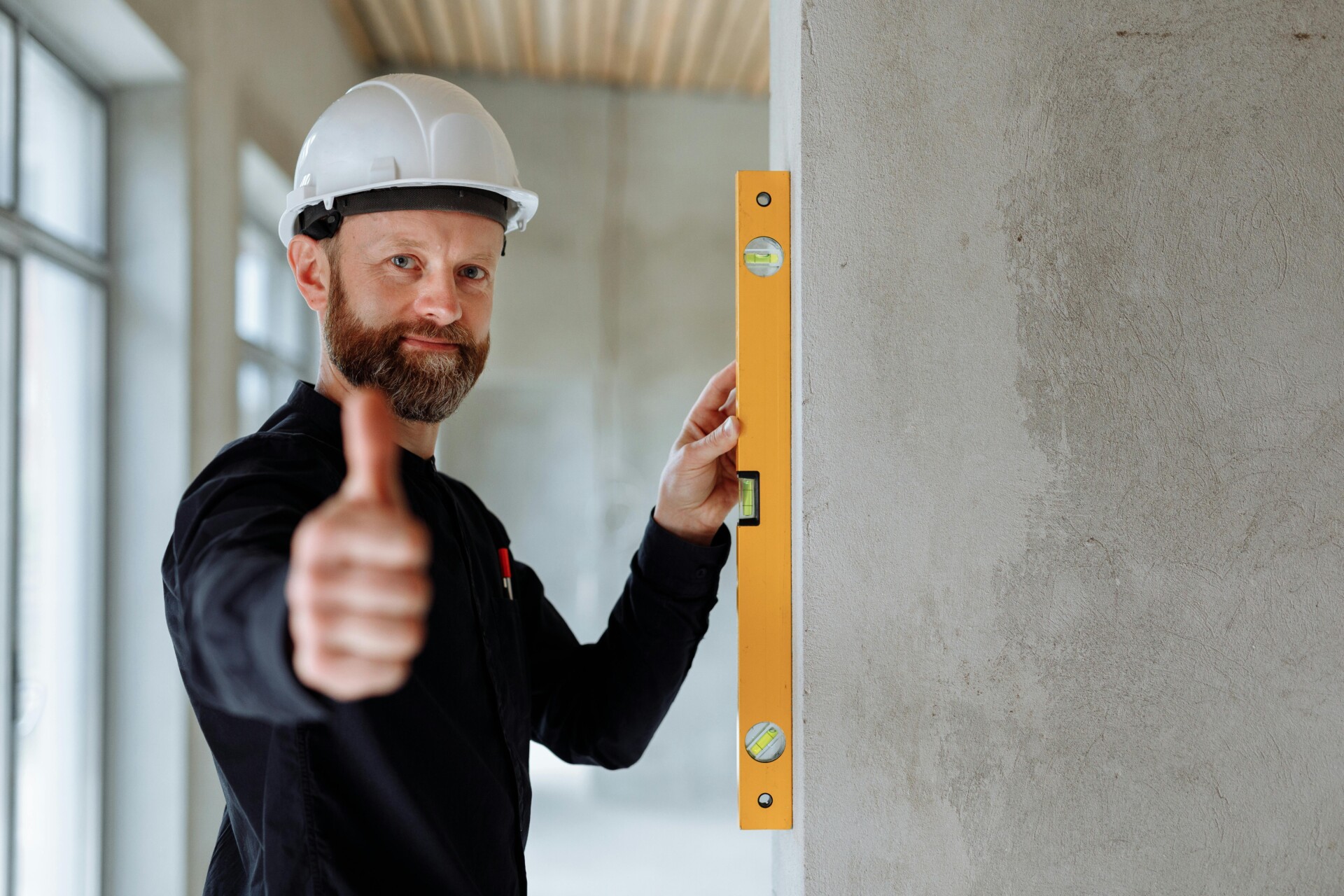Sound moves between units. We build walls to stop it. The question becomes: how well do those walls actually work when tested?
In McKinney, demising walls separate adjacent tenants or dwelling units, while Sound Transmission Class (STC) ratings measure how effectively walls block airborne sound. The International Building Code establishes STC 50 as the minimum design rating for unit-to-unit demising and corridor walls in apartments and condos. McKinney adopts the 2024 I-Codes with an effective date of October 1, 2025, requiring us to plan demising wall assemblies that meet or exceed applicable STC targets based on occupancy and adjacency requirements.
Which STC Ratings Apply To Demising Walls In McKinney By Occupancy?
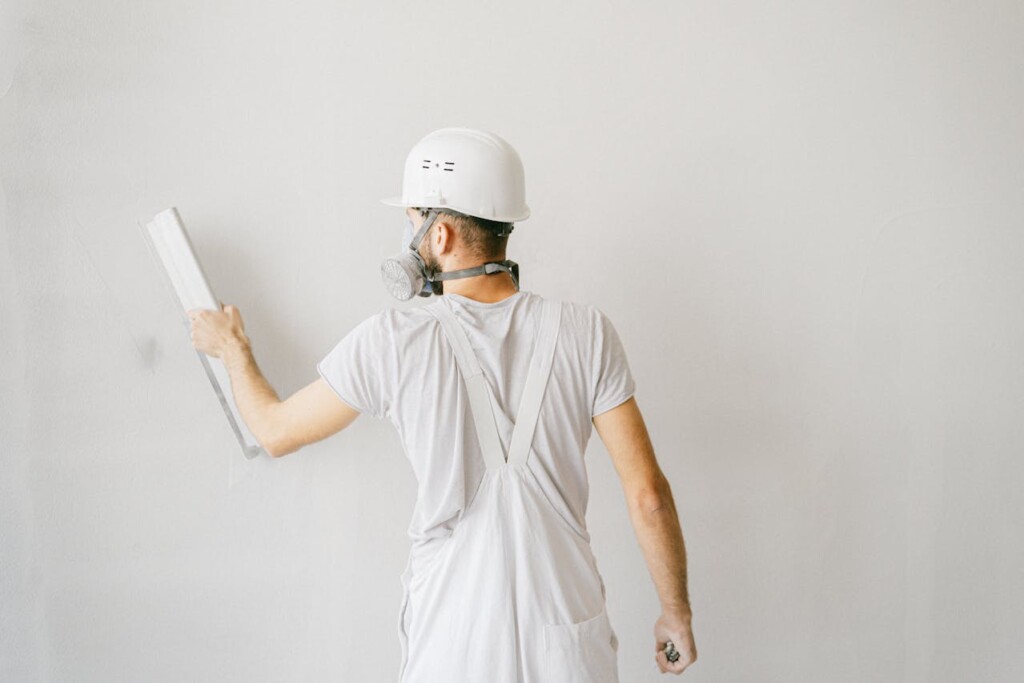
McKinney’s occupancy classification directly determines STC requirements for demising walls. The International Building Code establishes minimum sound transmission standards that vary by use type.
We coordinate different STC targets based on the specific occupancy classification and adjacency conditions your project serves.
Apartments And Condos
The IBC mandates STC 50 for unit-to-unit demising walls and corridor walls in residential occupancies. This applies to all apartment buildings and condominium projects within McKinney’s jurisdiction.
These requirements cover both demising walls between individual units and walls separating units from public corridors. We verify that wall assemblies meet this baseline before submitting for plan review.
Hotel Projects
Hotel demising walls typically require STC 55 between guestrooms, while corridor walls need STC 50. These ratings stem from hotel brand standards rather than code requirements.
Major hotel franchises like Hilton, Hyatt, IHG, and Marriott specify these enhanced acoustic standards in their brand requirements. We coordinate with brand representatives early in design to confirm specific STC targets for your project.
Brand standards often exceed code minimums to maintain guest satisfaction and property reputation across the franchise network.
Other Occupancy Types
Office buildings, retail spaces, and mixed-use projects don’t have specific code-mandated STC values for demising walls. However, there remains a reasonable expectation of speech privacy between adjacent tenant spaces.
We evaluate acoustic needs based on tenant types, lease requirements, and adjacency conditions. Professional offices adjacent to restaurants may need higher STC ratings than standard office-to-office demising walls.
McKinney Code Adoption Timeline
McKinney adopts international codes on a regular cycle. The 2024 I-Codes become effective locally on October 1, 2025.
We align project submittals and inspection schedules with this adoption timeline. Projects submitted before the effective date follow current code provisions, while later submittals must comply with the 2024 I-Codes.
Coordinate with established STC guidelines when planning assemblies that exceed minimum code requirements. This ensures consistent application across different project types and occupancy classifications.
How Is STC Determined, And What Are Its Limits?
STC values come from standardized laboratory testing conducted according to ASTM E90 for sound transmission measurements and ASTM E413 for calculating the single-number rating. These tests measure transmission loss across 16 specific frequencies ranging from 125 Hz to 4000 Hz, covering the primary speech frequency range where acoustic privacy matters most in demising wall applications.
The testing process involves generating controlled pink noise in a source room and measuring how much sound transmits through the wall assembly to a receiving room. Laboratory technicians record decibel differences at each frequency, then plot the transmission loss data against a standard reference contour defined by ASTM E413. The final STC rating represents the transmission loss value where this fitted contour intersects the 500 Hz frequency point.
Understanding that STC represents the entire wall assembly performance proves crucial for construction teams. We cannot determine STC ratings by adding individual material ratings together or calculating based on component specifications. The complete assembly including framing, gypsum layers, insulation, and connection details determines the final laboratory result.
STC testing carries significant limitations that affect high-performance demising wall design. The frequency range stops at 125 Hz, missing very low frequencies between 63-80 Hz that can transmit through walls as structure-borne vibration. Projects targeting STC ratings above 65 require additional attention to low-frequency control measures since the standard test range may not capture all relevant sound transmission paths.
The relationship between STC numbers and actual sound blocking differs from simple decibel reduction. An STC 50 wall does not block exactly 50 decibels across all frequencies. Instead, transmission loss varies significantly across the tested frequency range, with typical assemblies performing better at higher frequencies than at speech fundamentals around 125-250 Hz.
Practical perception differences help contextualize STC rating impacts during assembly selection. Most occupants can just perceive approximately 3 STC point differences between similar wall constructions. Changes of about 5 STC points become clearly noticeable to building users. Differences approaching 10 STC points feel roughly like doubling or halving the transmitted sound level, making this magnitude significant for privacy and comfort considerations in McKinney multifamily and hospitality projects.
Which Design Moves Increase A Demising Wall’s STC?
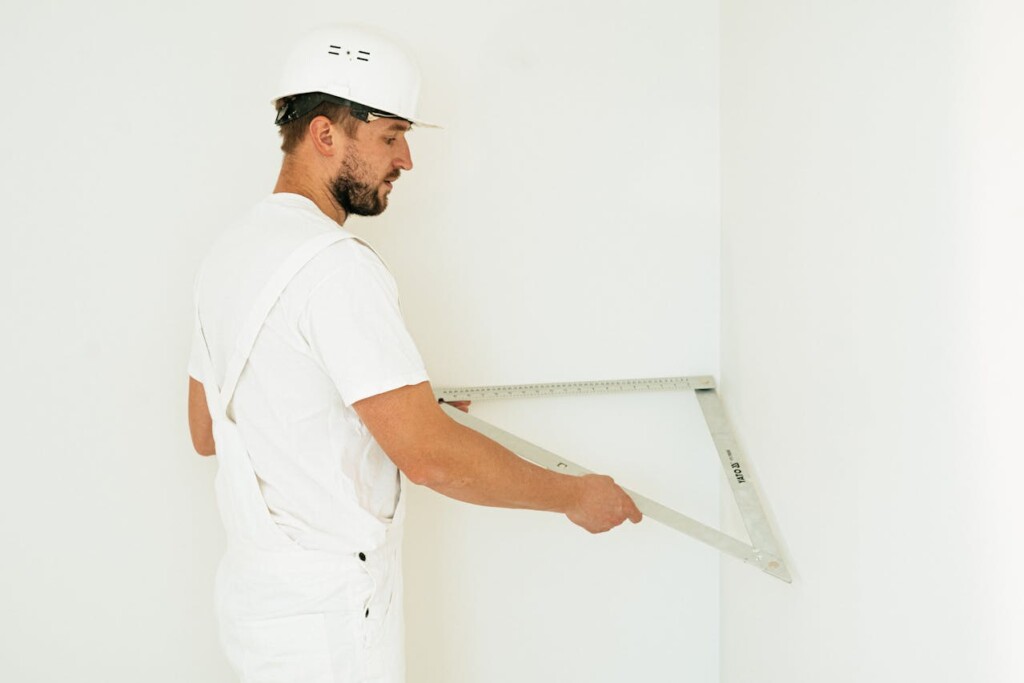
Improving demising wall assemblies requires strategic decisions across six key variables. Each approach offers measurable gains, though the specific improvement depends on the complete assembly and its interactions with other components.
Adding Mass To Wall Assemblies
Increasing wall mass through thicker gypsum board or additional layers provides consistent STC improvements. Moving from 1/2-inch to 5/8-inch gypsum board adds meaningful mass without major thickness changes. However, returns diminish with each additional layer.
We specify mass increases early in assembly planning because they integrate easily with standard framing practices. The key consideration is balancing performance gains against structural loading and wall thickness constraints.
Cavity Absorption With Insulation Materials
Adding fiberglass or mineral wool insulation to previously uninsulated cavities typically boosts STC ratings by approximately 8 points. This represents one of the most cost-effective improvements for demising walls.
We prioritize cavity insulation because it addresses airborne sound transmission while converting sound energy to heat. The insulation must fill the cavity completely to achieve maximum benefit. Spray foam provides limited acoustic value compared to fibrous insulation materials.
Cavity Depth And Stud Selection
Deeper stud cavities accommodate more insulation and create greater separation between wall faces. Moving from standard depths to 6-inch steel studs can add approximately 4 STC points when combined with appropriate insulation.
The additional depth allows for thicker insulation while maintaining proper installation practices. We coordinate cavity depth decisions with structural requirements and space planning constraints.
Controlling Assembly Stiffness
Reducing wall stiffness improves STC performance by limiting vibration transmission through the framing system. Metal studs provide better acoustic performance than wood studs due to their inherent flexibility.
Increasing stud spacing from 16 inches to 24 inches on center reduces stiffness where structurally permitted. Thinner-gauge studs also improve acoustic performance. EQ studs offer equivalent strength with reduced thickness, contributing to flexibility without compromising structural capacity.
Decoupling Strategies For Sound Isolation
Decoupling breaks the direct vibration path between wall faces. Chase walls with double studs provide the highest performance gain, adding approximately 14 STC points by completely separating the wall assemblies.
Resilient channel systems offer a more compact decoupling solution, typically adding around 5 STC points. Installation quality critically affects performance—any rigid connection that bypasses the resilient element reduces effectiveness.
Isolation clips with furring channels generally outperform resilient channel systems. These clips use rubber isolators to decouple the gypsum board from the framing, providing more reliable separation and typically higher STC improvements.
Sound Damping Through Specialized Products
Sound-damping gypsum board incorporates viscoelastic layers that dissipate vibrational energy. Replacing one layer of standard gypsum board with damping board can add approximately 11 STC points to an assembly.
We specify damping products when space constraints limit other approaches or when targeting high STC performance. The viscoelastic polymer converts sound energy to heat, particularly effective for controlling structure-borne vibration.
Performance gains vary significantly based on the complete assembly configuration and proper installation practices. Lab-tested assemblies provide the most reliable performance data, and we recommend selecting tested configurations that match project requirements rather than extrapolating from individual component ratings.
How Should McKinney Teams Document And Verify STC Compliance?
Lab-tested assemblies form the backbone of reliable STC compliance in McKinney. We coordinate documentation to ensure every wall assembly meets the required performance targets while satisfying local inspection requirements. The process centers on selecting proven assemblies, requesting detailed test data, and aligning construction details with tested configurations.
Selecting Lab-Tested Demising Wall Assemblies
We start by identifying assemblies that meet occupancy-specific targets. For multifamily projects, this means selecting configurations with documented STC 50 performance for demising and corridor walls. Hotel projects often require higher ratings based on brand standards, typically STC 55 for unit separation walls and STC 50 for corridors.
Each assembly we select comes with ASTM E90 laboratory test reports that verify transmission loss across 16 frequency bands. These reports document how the complete assembly performs under controlled conditions, providing the data needed for code compliance verification. We review manufacturer documentation to ensure the assembly design matches our project requirements for stud spacing, gypsum board thickness, and insulation type.
Requesting Full ASTM E90 Test Reports
When low-frequency control matters, we request complete test reports rather than relying solely on single-number STC ratings. These detailed reports show transmission loss performance at each tested frequency from 125 Hz to 4000 Hz. The frequency-specific data helps us evaluate how well an assembly will handle bass-heavy noise sources that fall within the tested range.
Full reports become particularly valuable when comparing similar assemblies or when designing for applications where speech privacy extends beyond typical office environments. We coordinate with acoustic consultants and manufacturers to obtain this documentation during the design phase, ensuring we have the technical data needed for submittal packages and inspector review.
Coordinating Construction Details In Submittals
Submittal coordination ensures field installation matches the tested assembly configuration. We detail framing specifications, fastener schedules, and acoustic treatment placement to replicate laboratory conditions. This includes specifying resilient channel installation methods, isolation clip spacing, and gypsum board attachment patterns that align with the test assembly.
Construction details matter because small deviations from tested configurations can significantly impact performance. We work with trade partners to document installation sequences for acoustical treatments, ensuring resilient systems maintain their decoupling properties and that cavity insulation achieves proper density without compression.
Planning For McKinney’s Code Adoption Timeline
McKinney’s adoption of the 2024 I-Codes on October 1, 2025 affects permit sets and inspection scheduling. We coordinate submittal packages to align with the applicable code edition based on permit application timing. Projects permitted before the adoption date follow current codes, while later permits must comply with 2024 requirements.
This timeline impacts assembly selection and documentation requirements. We prepare submittal packages that clearly reference the applicable code edition and include lab-tested assemblies that comply with the relevant standards. Early coordination with McKinney Building Inspections helps clarify documentation expectations and ensures smooth plan review processes.
Conclusion And Next Steps

Demising wall STC rating in McKinney requires strategic planning around both performance targets and local timelines. The STC 50 baseline for multifamily demising and corridor walls serves as our starting point, but hospitality projects often demand STC 55 for demising walls based on brand standards rather than code requirements. We coordinate these specifications early in design to avoid costly revisions during construction.
The October 1, 2025 code adoption date for McKinney’s 2024 I-Codes creates a clear deadline for project planning. We align permit submittals and inspection schedules with this transition to ensure compliance continuity. Projects crossing this timeline require careful documentation to demonstrate which code version applies to specific construction phases.
Assembly optimization relies on proven design levers that deliver measurable STC improvements. We specify cavity insulation, decoupling strategies, and sound-damping gypsum where needed, while managing stiffness through stud selection and spacing. These moves work synergistically when properly coordinated in lab-tested assemblies per ASTM E90 standards. Complete test reports become essential when targeting higher STC values, particularly for low-frequency control where standard ratings may not capture full performance.
Ready to specify demising wall assemblies that meet McKinney’s STC requirements and delivery schedules? Contact EB3 Construction to coordinate your acoustic compliance strategy.

